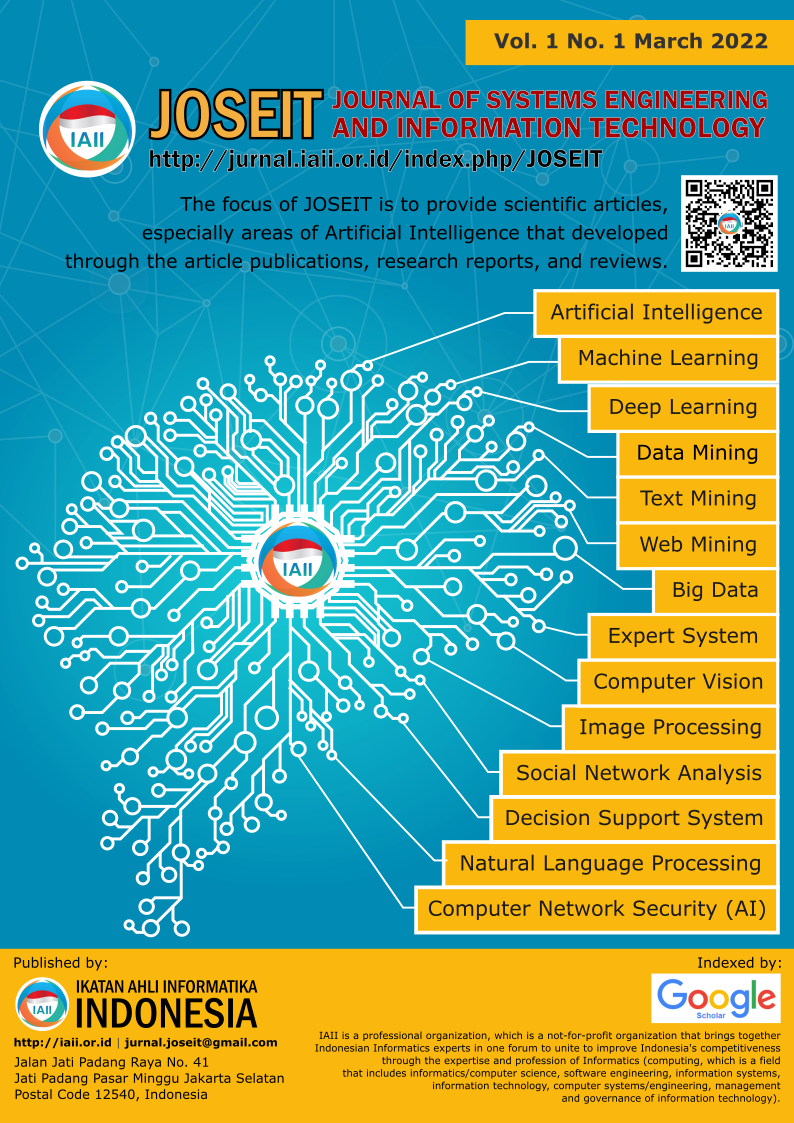Predicting ICO Prices Using Artificial Neural Network and Ridge Regression Algorithm
Abstract
An Initial Coin Offering (ICO) is a method of raising funds for digital currency projects. Investors purchase these coins at a very low initial price before they are released. These coins are then listed on the trading platform, and their prices may increase rapidly if the currency performs well. After six months of release, ICO evaluation is the expected time for investors to profit. A dataset consisting of 109 ICOs was constructed from reputable websites after data preprocessing. Correlation analysis of 12 inputs revealed issues of multicollinearity, leading to biased regression model results. Overfitting occurred when using the regression model. To address these limitations, the Ridge regression method resolved the issues with the ICO data. An artificial neural network model addressed the complex nonlinear relationships between inputs and ICO prices. By adjusting parameters to achieve the best performance according to the Root Mean Square Error, R-squares, and Mean Absolute Error metrics, the results showed that the Ridge regression algorithm with a test set of three ICOs achieved accuracy ranging from 63% to 92% of ICO prices, while the artificial neural network model predicted with 98% accuracy depending on the metric used.
Downloads
References
R. J. Balvers and B. McDonald, “Designing a global digital currency,” J Int Money Finance, vol. 111, 2021, doi: 10.1016/j.jimonfin.2020.102317.
T. Zhang and Z. Huang, “Blockchain and central bank digital currency,” ICT Express, vol. 8, no. 2, 2022, doi: 10.1016/j.icte.2021.09.014.
J. Campino, A. Brochado, and Á. Rosa, “Initial coin offerings (ICOs): Why do they succeed?,” Financial Innovation, vol. 8, no. 1, 2022, doi: 10.1186/s40854-021-00317-2.
J. Campino, A. Brochado, and Á. Rosa, “Success Factors of Initial Coin Offering (ICO) projects,” Economics Bulletin, vol. 41, no. 2, 2021.
M. Hashemi Joo, Y. Nishikawa, and K. Dandapani, “ICOs, the next generation of IPOs,” Managerial Finance, vol. 46, no. 6. 2020. doi: 10.1108/MF-10-2018-0472.
N. Ayarci and A. O. Birkan, “Determinants of ICO investment decision: An exploratory factor analysis,” International Journal of Financial Research, vol. 11, no. 5, 2020, doi: 10.5430/IJFR.V11N5P69.
S. Jin, R. Ali, and A. V Vlasov, “Cryptoeconomics: Data Application for Token Sales Analysis,” Proceedings of the 38th International Conference on Information Systems (ICIS) 2017 Special Interest Group on Big Data, Seoul, South Korea, 2017.
Y. E. Shao, C. J. Lu, and C. D. Hou, “Hybrid soft computing schemes for the prediction of import demand of crude oil in Taiwan,” Math Probl Eng, vol. 2014, 2014, doi: 10.1155/2014/257947.
Y. Liu, J. Sheng, and W. Wang, “Technology and Cryptocurrency Valuation: Evidence from Machine Learning,” SSRN Electronic Journal, 2021.
R. S. Domingo, J. Piñeiro-Chousa, and M. Ángeles López-Cabarcos, “What factors drive returns on initial coin offerings?,” Technol Forecast Soc Change, vol. 153, 2020, doi: 10.1016/j.techfore.2020.119915.
A. Dürr, M. Griebel, G. Welsch, and F. Thiesse, “Predicting fraudulent initial coin offerings using information extracted from whitepapers,” European Conference on Information Systems, no. May, 2020.
M. Butterworth, “The ICO and artificial intelligence: The role of fairness in the GDPR framework,” Computer Law and Security Review, vol. 34, no. 2, 2018, doi: 10.1016/j.clsr.2018.01.004.
ICO, “Big Data, artificial intelligence, machine learning and data protection,” Data Protection Act and General Data Protection Regulation, 2017.
J. Witton, “The ICO guidance on big data, AI and machine learning - what humans can learn,” PwC blog, no. July 10, 2017.
H. Itakura, “A solution to multiple linear regression problems with ordered attributes,” Computers and Mathematics with Applications, vol. 25, no. 2, 1993, doi: 10.1016/0898-1221(93)90222-H.
M. S. Khrisat and Z. A. Alqadi, “Solving multiple linear regression problem using artificial neural network,” International Journal of Electrical and Computer Engineering, vol. 12, no. 1, 2022, doi: 10.11591/ijece.v12i1.pp770-775.
I. G. P. Christyaditama, I. M. Candiasa, and I. G. A. Gunadi, “Optimization of artificial neural networks to improve accuracy of vocational competence selection of vocational school students using nguyen-widrow,” J Phys Conf Ser, vol. 1516, p. 012052, Apr. 2020, doi: 10.1088/1742-6596/1516/1/012052.
Copyright (c) 2023 Journal of Systems Engineering and Information Technology (JOSEIT)

This work is licensed under a Creative Commons Attribution 4.0 International License.
Authors who publish with this journal agree to the following terms:
- Authors retain copyright and grant the journal right of first publication with the work simultaneously licensed under Creative Commons Attribution 4.0 International License that allows others to share the work with an acknowledgment of the work's authorship and initial publication in this journal.
- Authors are able to enter into separate, additional contractual arrangements for the non-exclusive distribution of the journal's published version of the work (e.g., post it to an institutional repository or publish it in a book), with an acknowledgment of its initial publication in this journal.
- Authors are permitted and encouraged to post their work online (e.g., in institutional repositories or on their website) prior to and during the submission process, as it can lead to productive exchanges, as well as earlier and greater citation of published work (Refer to The Effect of Open Access).











.png)




